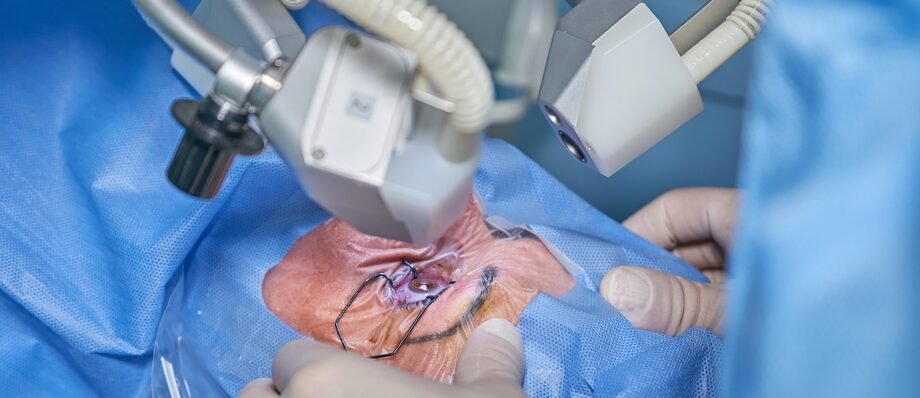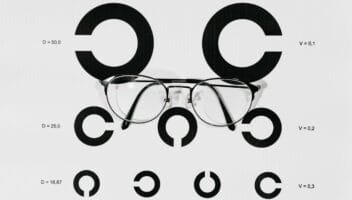Have you ever noticed your vision becoming blurry or hazy, especially in low light? It might be cataracts! Affecting millions of adults over 50, cataracts are a clouding of the eye’s natural lens, the transparent part responsible for focusing light and creating clear images.

This informative guide will equip you with everything you need to know about cataracts, from understanding their development to exploring treatment options and uncovering ways to potentially prevent them. Therefore, let’s clear up the confusion and get your vision back on track!
- What are Cataracts? Demystifying the Clouding of Your Lens
- Cataract Symptoms: Recognizing the Early Signs of Clouding Vision
- Diagnosing Cataracts: A Comprehensive Eye Exam
- Cataract Treatment Options: Regaining Clear Vision
- Choosing the Right IOL
- Living with Cataract Implants: Embracing Clear Vision and Healthy Habits
- Preventing Cataracts: Proactive Steps for Long-Term Eye Health
- Eye Safety Measures
- In Conclusion
- FAQ: Cataracts Answered (Addressing Common Concerns)
What are Cataracts? Demystifying the Clouding of Your Lens
Imagine your eye as a camera. The lens acts like the camera lens, focusing light rays onto the retina (the film) at the back of your eye to create sharp images. But what happens when the lens gets cloudy? That’s precisely what cataracts are – a clouding of the normally clear lens in your eye.
These clouds form due to protein clumps accumulating in the lens over time. Think of it like a fog on your camera lens – the image becomes blurry and distorted. Cataracts are a natural part of aging, affecting most people eventually. However, certain factors can increase your risk, such as diabetes, family history, and prolonged exposure to ultraviolet (UV) rays from the sun.
There are different types of cataracts, each affecting a specific part of the lens:
Nuclear cataracts: These cloud the centre of the lens, often causing blurry vision, especially in bright light.
Cortical cataracts: These affect the edges of the lens, sometimes appearing as spoke-like formations and potentially causing glare or halos around lights.
Posterior subcapsular cataracts: These develop at the back of the lens capsule, the thin sac that holds the lens in place. They can progress quickly and cause difficulty seeing near objects.
Understanding the type of cataract you have can help determine the best treatment approach. But before we delve into treatment options, let’s explore the telltale signs of cataracts in the next section.
Cataract Symptoms: Recognizing the Early Signs of Clouding Vision
Cataracts often develop gradually, and you might not notice any vision changes in the early stages. However, as the cataracts mature, they can cause a range of symptoms that disrupt your daily activities. Here are some common signs to watch out for:
Blurry or hazy vision
This is the most common symptom, often described as feeling like you’re looking through a foggy window.
Difficulty seeing at night
Cataracts can make it harder to see in low-light conditions, thus, making activities like driving at night or watching TV in the dark more challenging.
Increased sensitivity to glare
Glare from headlights, sunlight, and even lamps can become bothersome and uncomfortable with cataracts.
Frequent prescription changes
If you find yourself needing frequent adjustments to your glasses or contact lens prescription, it could be a sign of developing cataracts.

Seeing halos around lights
Cataracts can distort light passing through the lens, thus, causing halos or blurry circles around light sources.
Double vision
In some cases, cataracts can cause you to see double in one eye.
It’s important to remember that these symptoms can also be caused by other eye conditions. If you experience any of these signs, schedule a comprehensive eye exam with your ophthalmologist (eye doctor specialising in surgery) for a proper diagnosis.
Early detection of cataracts is crucial for preserving your vision and ensuring optimal treatment outcomes. Therefore, don’t hesitate to prioritise your eye health – clear vision is essential for a fulfilling life!
Diagnosing Cataracts: A Comprehensive Eye Exam
Just like a detective needs clues to solve a case, your ophthalmologist relies on a thorough eye exam to diagnose cataracts. This painless and non-invasive procedure allows them to assess the health of your eyes and determine the presence or absence of cataracts.
The exam typically includes several key eye tests:
Visual acuity test
This simple test measures your vision sharpness at various distances using a standardised eye chart.

Slit-lamp examination
Using a specialised microscope with a bright light source, your ophthalmologist can magnify your eye and examine the lens for any signs of clouding or cataracts.
Dilation
Eye drops are used to widen (dilate) your pupils, allowing the doctor to examine the retina and optic nerve at the back of your eye for any potential complications.
These tests, combined with a discussion of your symptoms and medical history, paint a clear picture for your ophthalmologist. Early diagnosis of cataracts is crucial, as it allows for timely treatment and helps prevent vision loss.
If cataracts are present and significantly impacting your daily life, your doctor will discuss treatment options, most commonly cataract surgery. Let’s delve deeper into the world of cataract surgery in the next section!
Cataract Treatment Options: Regaining Clear Vision
Cataracts don’t magically disappear on their own. Fortunately, modern medicine offers a highly effective and safe treatment option: cataract surgery. This outpatient procedure aims to remove the clouded lens and replace it with a clear artificial lens called an intraocular lens (IOL).
When cataracts significantly affect your daily activities, and glasses or contact lenses no longer provide adequate vision correction, cataract surgery might be the key to regaining clear vision.
Here’s a breakdown of the most common type of cataract surgery, phacoemulsification:
Phacoemulsification
Imagine a minimally invasive procedure using a tiny incision, sound waves, and a vacuum cleaner – that’s essentially phacoemulsification! Here’s how it works:
Making the incision
A small incision (usually less than 2.8 millimetres) is created on the cornea, the clear dome at the front of your eye.
Breaking up the cataract
A thin probe is inserted through the incision and emits ultrasonic waves to gently break the cataract into tiny fragments.
Removing the fragments
These fragments are then suctioned out using a vacuum cleaner-like device.
Implanting the IOL
Once the cataract is removed, a meticulously folded IOL is inserted through the same incision and unfolds within the lens capsule, the empty sac that held the natural lens.
Sealing the incision
The amazing thing is that due to the tiny incision size, stitches are usually not required. The incision naturally seals itself.
Extracapsular Cataract Extraction (ECCE)
While phacoemulsification is the preferred method due to its minimally invasive nature, another technique called ECCE exists for more advanced cataracts. This method involves a larger incision and removal of the entire lens capsule along with the cataract. However, ECCE is less common today due to the advancements in phacoemulsification.
The Surgical Experience
Cataract surgery is typically performed on an outpatient basis, meaning you go home the same day. You’ll likely receive local anaesthesia to numb the area around your eye, keeping you comfortable during the procedure. While you might see some light and movement, you won’t feel any pain. Also, the entire surgery usually takes less than an hour.

Choosing the Right IOL
An important aspect of cataract surgery is selecting the right IOL. These artificial lenses come in various types, each with its own benefits:
Monofocal IOLs
These standard IOLs provide clear vision at a chosen distance, typically distance vision. You might still need glasses for reading or close-up work.
Multifocal IOLs
These advanced IOLs offer multiple focal points, aiming to correct your vision at various distances, potentially reducing your reliance on glasses.
Toric IOLs
These specialised IOLs can correct astigmatism along with cataracts, providing sharper overall vision. Discussing your vision needs and lifestyle with your ophthalmologist will help you determine the most suitable IOL type for you.
Living with Cataract Implants: Embracing Clear Vision and Healthy Habits
Cataract surgery and IOL implantation can significantly improve your quality of life. Imagine waking up to clear vision without the need for bulky glasses or struggling to see everyday objects.
Here are some of the benefits you can expect:
Improved vision
The most obvious benefit is regaining clear vision, allowing you to enjoy activities you might have previously found challenging, like reading, driving, or recognizing faces.
Enhanced independence
With improved vision, you can become more independent and manage daily tasks with greater ease.
Increased confidence
Clear vision can boost your confidence and overall well-being, allowing you to participate more actively in life.
Remember: Cataract surgery is a safe and effective procedure, but it’s not a magic bullet. If you experience any concerning symptoms after surgery, don’t hesitate to contact your ophthalmologist right away.
Preventing Cataracts: Proactive Steps for Long-Term Eye Health
While there’s no guaranteed way to prevent cataracts completely, certain lifestyle modifications and habits can potentially lower your risk and promote overall eye health.
Here are some key strategies to consider:
Wear sunglasses
Protect your eyes from harmful UV rays by wearing sunglasses that block UVA and UVB rays.
Regular eye exams
Schedule regular eye exams with your ophthalmologist to monitor your eye health and detect any potential problems early on.
Manage pre-existing conditions
If you have diabetes or other health conditions that increase your risk of cataracts, work closely with your doctor to manage them effectively.
Maintain a healthy weight
The risk of cataract is more in case of obesity. Maintaining a healthy weight through diet and exercise can be beneficial. Eating a balanced diet rich in fruits, vegetables, and omega-3 fatty acids can contribute to overall eye health.
Embrace a balanced diet
Nourish your eyes with a diet rich in antioxidants and essential vitamins. Fruits, vegetables, and foods rich in vitamins C, E, and lutein might be helpful.
Quit smoking and limit alcohol
Smoking and excessive alcohol consumption can contribute to eye problems, including cataracts.
Protect your eyes from UV rays
Ultraviolet (UV) radiation from the sun is a risk factor for cataracts. Wearing sunglasses that block UVA and UVB rays is crucial. Opt for wide-brimmed hats for added protection outdoors.

By following these simple steps, you can maintain healthy eyes and enjoy the benefits of clear vision for years to come.
Eye Safety Measures
Regular eye exams
Schedule regular eye exams with your ophthalmologist, even if you’re not experiencing any vision problems. Early detection of cataracts allows for timely treatment and better outcomes.
Eye protection during activities
Wear protective eyewear when participating in activities that could injure your eyes, like sports or home improvement projects.
Remember, these are preventive measures, and individual results may vary. However, by incorporating these habits into your lifestyle, you can take a proactive approach to safeguarding your eye health and potentially delay the development or progression of cataracts.
In Conclusion
Cataracts are a common age-related condition, but they don’t have to limit your vision. With early diagnosis, effective treatment options like cataract surgery, and a commitment to healthy habits, you can maintain clear vision and enjoy a fulfilling life.
If you have any concerns about cataracts or your eye health, don’t hesitate to consult your ophthalmologist. Remember, knowledge is power, and prioritising your vision is an investment in your overall well-being.
FAQ: Cataracts Answered (Addressing Common Concerns)
Cataracts can raise many questions. Here are some frequently asked questions to empower you with knowledge:
Can cataracts be reversed?
Unfortunately, cataracts cannot be reversed. Once the protein clumps form in the lens, they cannot be dissolved or broken down naturally. However, cataract surgery effectively removes the clouded lens and replaces it with a clear IOL, restoring vision.
Can cataracts cause headaches?
Cataracts themselves typically don’t cause headaches directly. However, straining your eyes due to blurry vision from cataracts can lead to headaches. Once cataracts are removed with surgery, and clear vision is restored, these headaches often subside.
What happens during cataract surgery?
As covered earlier, cataract surgery, typically phacoemulsification, is a minimally invasive outpatient procedure. Here’s a simplified breakdown:
1. A tiny incision is made in the cornea.
2. Further, the ultrasonic waves break up the cataract into fragments.
3. The fragments, then, are suctioned out.
4. Then, foldable IOL is inserted through the incision and unfolds within the lens capsule.
5. Finally, the incision usually seals itself naturally.
The entire procedure typically takes less than an hour.
How long does cataract surgery take?
Cataract surgery itself is a relatively quick procedure, usually taking less than an hour. However, the entire appointment, including pre-operative preparation and post-operative checks, might take a few hours.
What are the risks of cataract surgery?
Cataract surgery is a very safe and effective procedure. However, as with any surgery, there are some potential risks, although rare. These can include infection, bleeding, and retinal detachment. Your ophthalmologist will discuss these risks in detail before the surgery.




